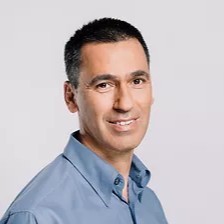- Video Library
- Almog Aley-Raz, CorNeat Vision - Innovative Biomimetic Medical Solutions | LSI USA '24
Almog Aley-Raz, CorNeat Vision - Innovative Biomimetic Medical Solutions | LSI USA '24

Almog Aley-raz
Experienced Chief Executive Officer with strong technical and business background and a demonstrated history of driving products, projects, and companies to indisputable success. A fast learner with deep multi-disciplinary understanding and experience in managing people and technology spanning startups and corporate environments. Expert in product management, global marketing, and expansion strategy.
Almog Aley-raz
Experienced Chief Executive Officer with strong technical and business background and a demonstrated history of driving products, projects, and companies to indisputable success. A fast learner with deep multi-disciplinary understanding and experience in managing people and technology spanning startups and corporate environments. Expert in product management, global marketing, and expansion strategy.

17011 Beach Blvd, Suite 500 Huntington Beach, CA 92647
714-847-3540© 2025 Life Science Intelligence, Inc., All Rights Reserved. | Privacy Policy







